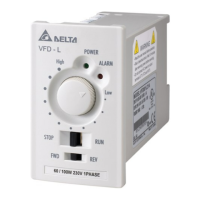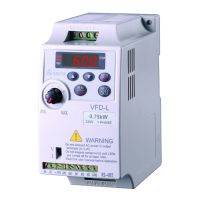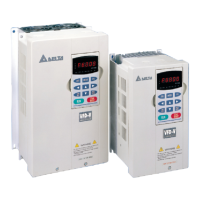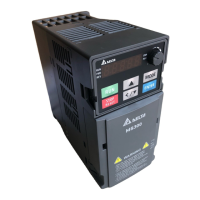Chapter 4 Parameters|
4-118 Revision Jan. 2009, 06EE, SW--PW V1.12/CTL V2.12
If the motor no-load current can’t be read from the nameplate, operating the AC motor drive
after unloading and read it from the digital keypad (optional, refer to Appendix B for details).
The setting value must be less than Pr.07.00 (Motor Rated Current).
Related parameters: Pr.00.01(Rated Current Display of the AC motor drive), Pr.07.00(Motor
Rated Current (Motor 0)), Pr.07.03(Slip Compensation (Used without PG) (Motor 0)) and
Pr.07.06(Motor Rated Slip (Motor 0))
07.02 Torque Compensation (Motor 0) Unit: 0.1
Settings 0.0 to 10.0 Factory Setting: 0.0
For the induction motor characteristic, parts of the drive output voltage will be absorbed by the
impedance of stator windings when motor load is large. In this circumstance, the output current
will be too large and output torque is insufficient due to the motor voltage at inductance end of
motor is insufficient and insufficient air-gap magnetic field. Using this parameter, it will auto
adjust output voltage by the load to get the best operation with the air-gap magnetic field is
held.
In V/f control mode, the voltage will decrease by the decreasing frequency. It will cause lower
torque in low speed due to less AC impedance and constant DC resistor. Thus, this parameter
can be set for the AC drive increase its voltage output to obtain a higher torque in low speed.
Too high torque compensation can overheat the motor.
This parameter is only used for V/f control mode.
Related parameters: Pr.00.10(Control Method) and Pr.07.08(Torque Compensation Time
Constant).
07.03 Slip Compensation (Used without PG) (Motor 0) Unit: 0.01
Settings 0.00 to 10.00 Factory Setting: 0.00
When the induction motor generates the electromagnetic torque, it needs the necessary slip.
But the slip can be ignored when it needs only 2-3% slip in higher speed. When the drive
operates, the slip and synchronous frequency are in reverse proportion. That is, the slip will be
increased with the decreasing synchronous frequency. The slip affects the motor speed
seriously in low speed because the motor may stop and can’t run with load when the
synchronous frequency is too low.
While driving an asynchronous motor, increasing the load on the AC motor drive will cause an
increase in slip and decrease in speed.
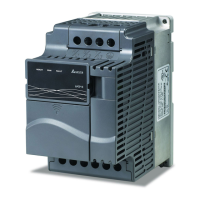
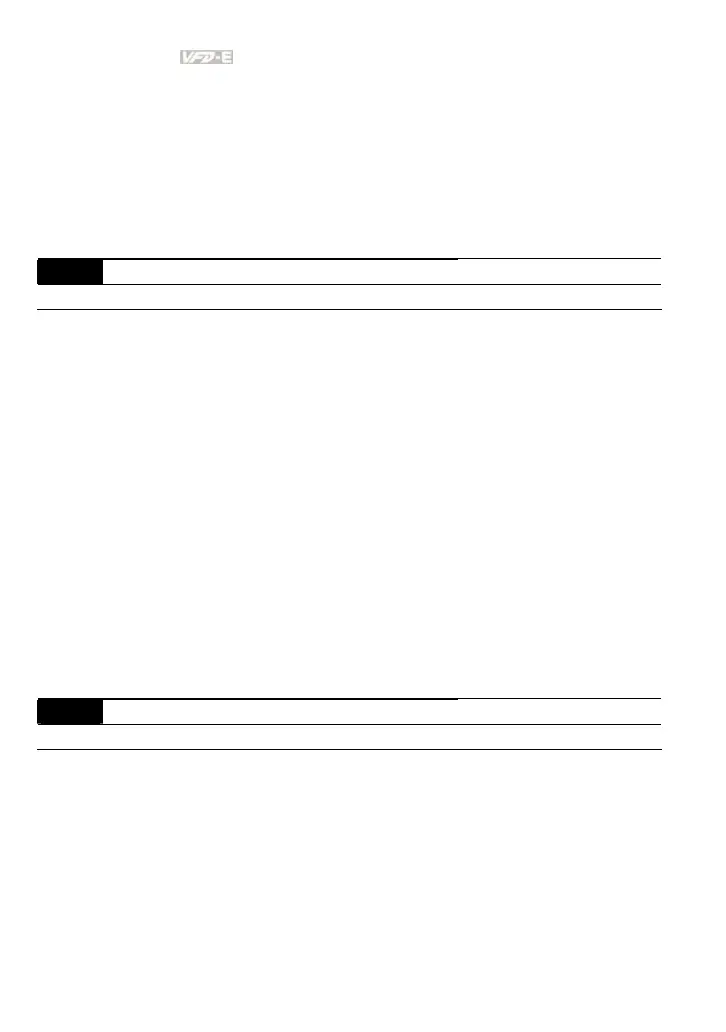